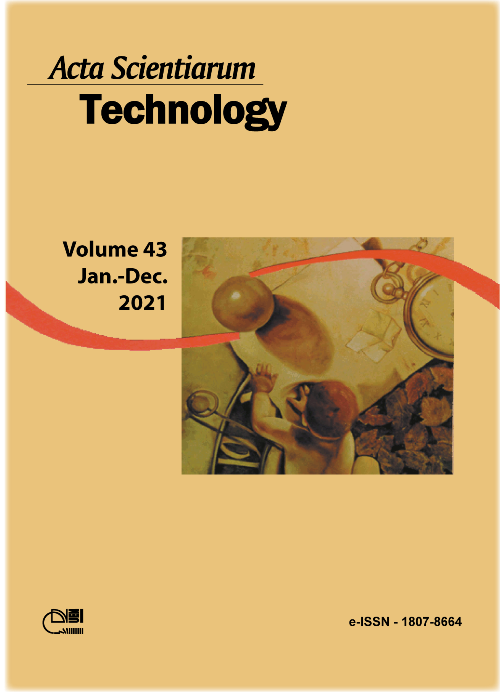Biomass cogeneration plants integrated into poultry slaughterhouses for reducing industry costs with energy
DOI:
https://doi.org/10.4025/actascitechnol.v43i1.50967Palavras-chave:
biomass cogeneration plants; poultry slaughterhouses; renewable energy; wood chips.Resumo
A technical and economic feasibility analysis was performed concerning biomass cogeneration to supply the thermal and electricity demands of poultry slaughterhouses. The analysis considers measured data referring to the annual energy consumption from an existing industry as well as the characteristics of equipment available in the Brazilian market. The cogeneration plant is equipped with a water tube steam generator and a condensing-extraction steam turbine in a Rankine cycle. Four different configurations were evaluated, including impulse and reaction turbines at two steam pressure/temperature levels (43 bar / 450 °C and 68 bar / 520 °C). A steady state full load operation is considered at cogeneration mode on the weekdays and at Rankine power plant mode on the weekends, when there is no process steam consumption. The technical analysis pointed out the reaction turbine at 68 bar / 520 ºC as the best alternative, leading to the highest overall efficiency. In addition, this plant configuration showed economic advantages represented by an Internal Rate of Return (IRR) of 21%, a Net Present Value (NPV) of US$ 10.93 million, and a payback time of 6 years, enabling a reduction on the industrial cost with energy in the slaughterhouse to 19 US$/ton of product (-30% in comparison to the base case). Finally, the calculated LCOE of 73 US$/MWh was lower than the current price of the electricity in the market, indicating potential economic feasibility of the proposed concept.
Downloads
Downloads
Publicado
Como Citar
Edição
Seção
Licença
DECLARAÇíO DE ORIGINALIDADE E DIREITOS AUTORAIS
Declaro que o presente artigo é original, não tendo sido submetido í publicação em qualquer outro periódico nacional ou internacional, quer seja em parte ou em sua totalidade.
Os direitos autorais pertencem exclusivamente aos autores. Os direitos de licenciamento utilizados pelo periódico é a licença Creative Commons Attribution 4.0 (CC BY 4.0): são permitidos o compartilhamento (cópia e distribuição do material em qualqer meio ou formato) e adaptação (remix, transformação e criação de material a partir do conteúdo assim licenciado para quaisquer fins, inclusive comerciais.
Recomenda-se a leitura desse link para maiores informações sobre o tema: fornecimento de créditos e referências de forma correta, entre outros detalhes cruciais para uso adequado do material licenciado.



















